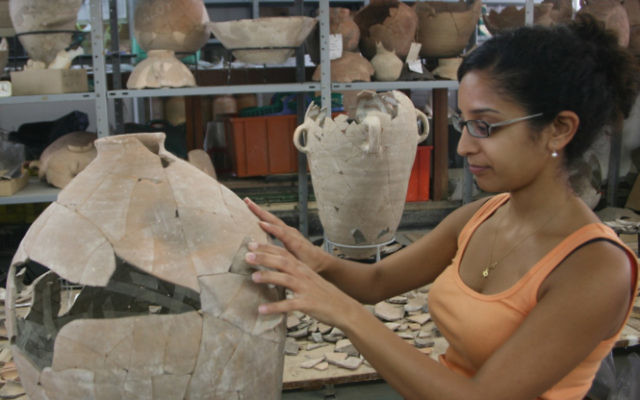Aussies to dig in Israel
A JOINT program between an Australian and an Israeli university will allow students from these shores to take part in important archaeological digs in the Holy Land. As well as on-site experience in the Jewish State, Sydney’s Macquarie University will also offer archaeology courses about ancient Israel for the first time, both to students as units of study during the semester and to the community during term breaks.
A JOINT program between an Australian and an Israeli university will allow students from these shores to take part in important archaeological digs in the Holy Land.
As well as on-site experience in the Jewish State, Sydney’s Macquarie University will also offer archaeology courses about ancient Israel for the first time, both to students as units of study during the semester and to the community during term breaks.
“We’ve had digs in Egypt and Greece and so I wondered why we hadn’t been in Israel before,” program for early Mediterranean studies director Gil Davis told The AJN.
“History is written from text and that forms a basis of our understanding.
“But we aren’t likely to find a lot more texts and so the whole point of a dig is that it is scientific and that is how we are still learning about history.”
Professor Oded Lipschits, the head of the archaeology department at Tel Aviv University, said he is excited to see Australians join the dig that will start in mid-July.
“Every week we will have about 100 people from all over the world, including Germany, England, Poland, America, Canada, South Africa and now Australia, come to Israel for six weeks to be a part of this exciting dig,” Lipschits said.
The dig will be in Sokho and Azekah, 35 kilometres south-west of Jerusalem, where David and Goliath fought.
“We are very excited about both sites,” Lipschits said. “We are excavating the border between Judah and the Philistines.
“What is exciting is that when we find small pieces, we can take them back to camp, then put them in water, brush them, clean them and then return the pieces to the restoration lab where specialists can build jars and other items from history.”
He said by rebuilding little items across a site you can recreate an entire house and understand how people lived thousands of years ago.
JOSH LEVI


comments